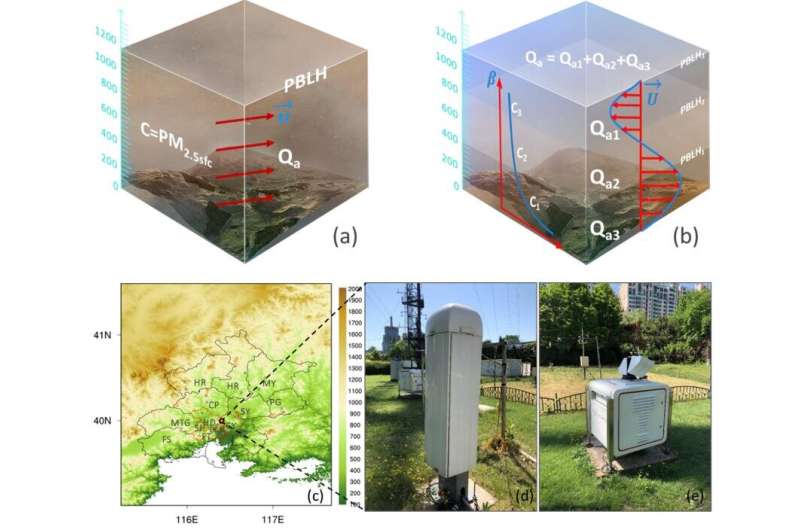An improved algorithm to accurately quantify atmospheric environmental capacity

Atmospheric environmental capacity (AEC) is an important basis for setting standards of urban and regional atmospheric pollutant emission. Accurate quantification of AEC in the atmospheric planetary boundary layer (PBL) plays a vital role in the prevention and control of air pollution.
Since the meteorological conditions in PBL are constantly changing, the AEC is a dynamic variable. Fine-resolution vertical observations show that aerosol, such as PM2.5, has a significant layered structure in the PBL, and the single-box hypothesis in the traditional algorithm is inconsistent with reality.
Researchers led by Prof. Xin Jinyuan with the Institute of Atmospheric Physics of the Chinese Academy of Sciences and their collaborators proposed a new algorithm for dynamic multi-box AEC.
The study was published in Science of The Total Environment.
Compared with the traditional A-value method, the new algorithm uses coefficient A calculated by high-resolution ceilometer and Doppler wind profiler lidar to replace the regional empirical coefficient A.
Based on the Lettau dynamic balance model, the time coefficient served to construct dynamic AEC. The backscattering coefficient profile was used to integrate the concentration of particulate matter inside the PBL, and the multi-box model was adopted in the vertical direction to make it suitable for PM2.5 and other particulate matter.
"Combined with the atmospheric circulation classification, the AEC under typical PBL structures and circulation background can be accurately estimated," said Prof. Xin.
The improved algorithm can accurately calculate PM2.5 AEC under different circulation patterns and predict short-term dynamic changes of AEC. The results show that the differences of meteorological conditions and PBL aerosols structure under different circulation patterns make the AEC of clean types significantly different from that of the pollution types.
The improvements of time coefficient and vertical multi-box can effectively reduce the error caused by the variations with time and variations in the vertical direction respectively.
When PM2.5 concentration, horizontal wind speed and planetary boundary layer height (PBLH) change greatly with time, the improvement of time coefficient is more obvious, which is consistent with most circulation patterns. When PM2.5 concentration and horizontal wind change greatly in the vertical direction, such as the anticyclonic, northeasterly and westerly circulations, the advantage of multi-box model is more pronounced.
"This study will provide a high-precision and high-resolution algorithm to assess atmospheric environmental capacity for regional or local accurate control of air pollution," said Prof. Xin.
More information: Yunyan Jiang et al, The dynamic multi-box algorithm of atmospheric environmental capacity, Science of The Total Environment (2021). DOI: 10.1016/j.scitotenv.2021.150951
Journal information: Science of the Total Environment
Provided by Chinese Academy of Sciences



















